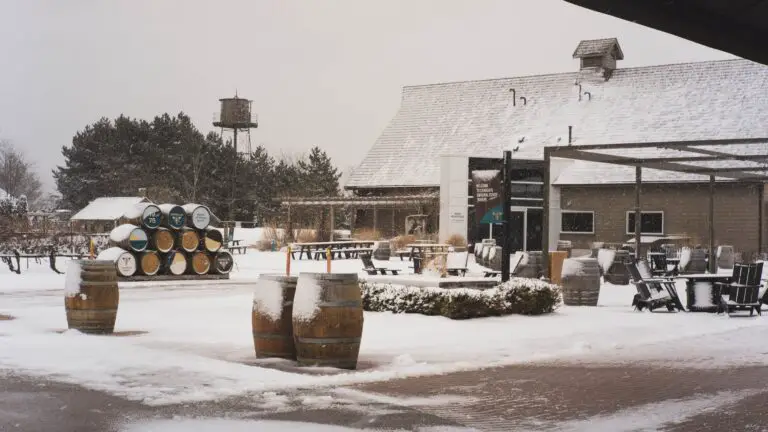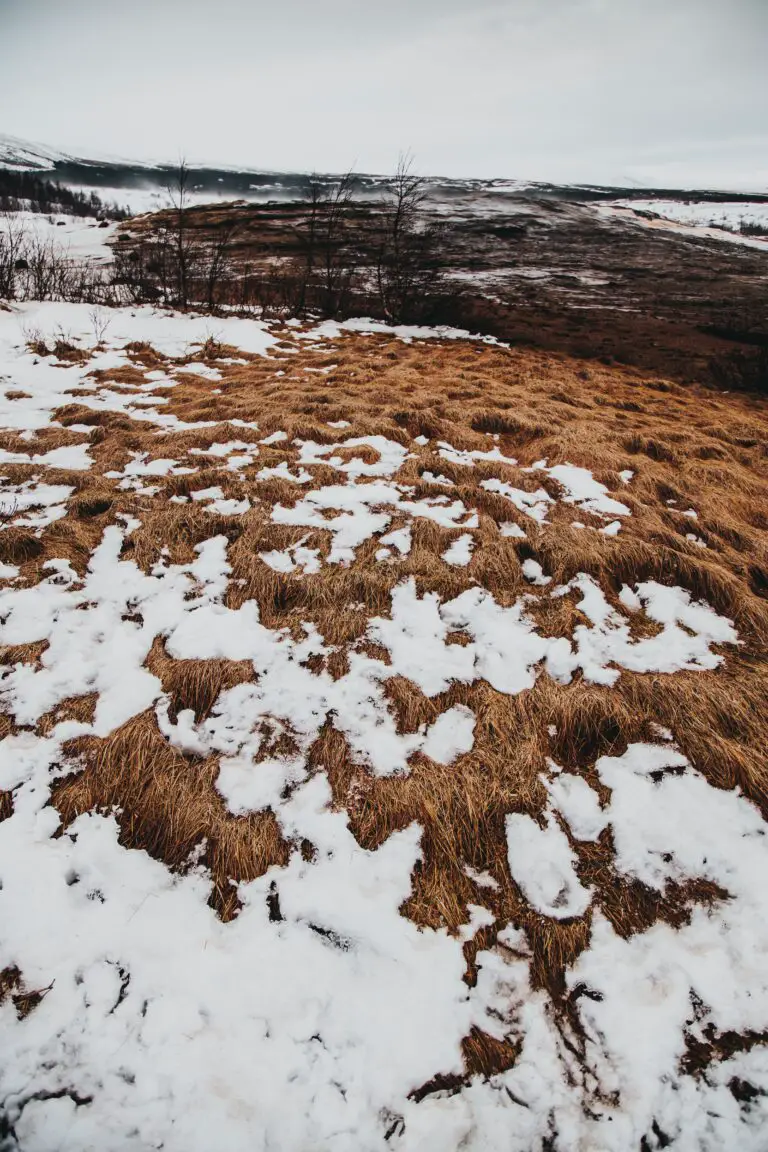Introduction to Sedum and Frost Resistance
Welcome to the ice-resilient world of Sedum, a genus celebrated for its astonishing adaptability and variety. Often hailed as a beacon of perseverance, Sedum plants, or Stonecrops, are a gardener’s ally in the battle against the cold snap. But can these hardy warriors really stand up to Jack Frost’s chilly advances?
Imagine a landscape wagering against the frost, a stellar display of verdant Sedum emerging victorious under a crystalline blanket. These plants are not just about survival; they are about flaunting their resilience with panache. In pockets of gardens where many fear to sow, Sedum plants thrive, outwitting frost with a botanical bravado that has made them a favorite among cold climate green thumbs.

Delving into the secrets of Sedum’s frost resistance unveils a tale of anatomic brilliance and physiological finesse. It’s a botanical ballet where each plant prepares itself for the icy curtain call, ensuring life persists beneath the frozen stage. Seeking knowledge about Sedum plant care? Let the experts at Proven Winners guide you with a comprehensive growing and care guide.
For those yearning for horticultural success in cooler domains, Sedums present an enchanting solution. Their frosty foray is a testament to nature’s ingenuity. Meanwhile, gardening aficionados seeking to broaden their cold-climate cultivation repertoire can glean insights from the secrets of flourishing in harsh climates with other marvelous mountain-dwellers.
Understanding Frost and Its Effects on Plants
Ever noticed the whimsical sparkle on the grass as you wake up to a chilly morning? That’s frost – nature’s very own ice artist, delicately etching its patterns on every surface it can touch, including our favorite garden greenery. But what exactly is frost, and why does it have such a dramatic impact on plants?
Frost forms when water vapor in the air crystallizes directly onto surfaces, like leaves or blades of grass, when temperatures dip to the freezing point or below. This isn’t just an overnight magic trick, but a combination of factors such as clear skies, calm winds, and plummeting thermometer readings. Imagine water molecules floating like tiny ballerinas in the air, then as the temperature nosedives, they come to a standstill, joining hands to create a glistening mesh of ice crystals. It’s a spectacular transformation, but for plants, it’s a showcase with a sting.
The effects of frost on our leafy companions are more than skin deep. When these icy crystals form, they can cause the water inside plant cells to freeze as well. Now, water expanding upon freezing is fine for a rink but inside a plant cell, it’s a crisis! The cell walls can rupture, leading to damage that not only looks like a bruise but can also spell the bitter end for tender vegetation. Take for instance a gardener’s sorrow upon discovering their lush tomatoes rendered limp and discolored by an unexpected frosty visitor.
Some plants, however, lace up their boots and march through the frost with hardly a shiver. These are the hardy souls of the plant kingdom, like the sedum, that we’re keen to understand: Can they truly survive a frosty onslaught? But before we delve into the frost-resilience of stonecrop plants, let’s take a closer look at frost’s impact through a visual source. Check out this video that addresses the chilling effects of frost damage on plants.
Now, not all frost is created equal. There’s light frost, which is like a cool breeze compared to the harsh blizzard of a hard frost. Interested in how to handle these chilly scenarios? Find out more about frost management strategies here.
With our stage set and the frosted ground beneath us, we know that understanding frost’s chilling embrace is vital for any gardening enthusiast. After all, knowing your enemy is the first step in defending your green allies from its icy grip.
Sedum Species and Their Hardiness Zones
Whether blanketed in snow or brushed with frost, Sedum plants, also known as Stonecrop, showcase a resilient symphony of survival in the face of winter’s chills. These hardy succulents belong to a diverse genus that thrives across a broad range of climates, particularly excelling in the cold-hardy zones. What unravels this botanical enigma? The answer lies in the gardening atlas: the USDA Plant Hardiness Zone Map.

Hardiness zones are delineated areas that outline the minimum temperatures a plant can endure, and Sedum species have staked their claim across many such zones. From the icy embrace of Zone 3, where temperatures can plummet to -40°F, to the milder climes of Zone 9, with its balmy lower limit of 20°F, Sedums stand undeterred. In the hands of Mother Nature, these plants have evolved to not just endure but flaunt their frost-bitten foliage with verve.
Take, for instance, ‘Autumn Joy,’ a sedum cultivar whose robustness against the cold is rivaled only by its fiery autumnal charm. Or ponder the frost-kissed rosettes of Sedum spathulifolium ‘Cape Blanco,’ nestled in coastal zones where the frost sketches delicate patterns across its silvery leaves. But it’s not just about botanical bravado; gardeners equip themselves with this hardiness heuristic to sculpt gardens that defy winter’s harsh rule.
For those brave enough to dance with the frost, adding a tapestry of Sedum plants to your garden promises a year-round performance, featuring a crescendo of resilience when the cold months roll in. Embrace the beauty of these hardy perennials and let them whisk away any concerns about frost damage—Sedum is your stalwart garden sentinel, after all.
Physiology of Sedum: How They Survive the Cold
Think of Sedum plants as the superheroes of the succulent world when it comes to braving the chill. These stonecrop plants don’t just survive the cold; they give Jack Frost a run for his money with their frost-resistant superpowers.
What’s their secret, you ask? Imagine Sedum leaves as tiny water reservoirs. Fleshy and plump, the leaves are jam-packed with juicy water-storing cells. This trait is like having a built-in antifreeze system—it allows them to withstand temperatures that would make other plants shiver and shrink away.
Picture this: a snowy evening in the middle of winter. Everything is frozen solid, but there, standing strong and green against the frosty landscape, is the Sedum. These plants have adapted to keep their cells from being damaged by frost. It’s like they’re wearing microscopic coats, shielding the vital inner workings from the icy grip of the cold.
Now, it’s not just the succulent leaves that make Sedum a winter warrior. Their entire structure is about resilience. They don’t just hunker down and wait for warmer days; instead, they take on the cold headfirst. The waxy surface of their leaves is another shield, which repels the moisture that can lead to frost damage.
But let’s get real for a moment—have you ever seen Sedum after a light frost? There’s something extraordinary about the way they glisten as the sun hits the icy coating, almost like they’re winking at the winter. It’s a beautiful sight, but more importantly, it’s a testament to their resilience.
For gardeners, knowing that Sedum can handle the chill means less worry about that surprise spring frost nipping your garden in the bud. Instead, you can rest easy knowing your Sedum won’t just survive—they’ll continue to stand out with their vibrant colors and unique textures, regardless of Jack Frost’s plans.
Prepping Sedum for Winter: Steps to Enhance Frost Survival
As a hardy bunch, Sedum plants—affectionately known as Stonecrops—often laugh in the face of frigid weather. However, like all living things, they have their limits and appreciate a helping hand to weather the frost. Let’s delve into some actionable gardening tips to ensure your Sedum stands strong against the winter’s chill.
First off, consider the “fall feast”: a modest application of low-nitrogen fertilizer as autumn whispers its arrival. This little boost supports root strength without encouraging the tender growth that frost finds so appetizing. Now’s also the time to curb your watering enthusiasm. Overly damp soil and frigid temperatures are a recipe for root-rot disaster—one that no Sedum connoisseur wants on their winter menu.
Next, let’s talk shelter. While not the types to demand a five-star greenhouse, Sedums do appreciate some protection from extreme conditions. Mulching with straw or leaf litter can be your plant’s personal insulation blanket, safeguarding it from biting frosts. Apply a layer after the first freeze; just enough to cover the crowns, yet allowing these stoic succulents room to breathe. And here’s a real-life tip: pine needles not only insulate but also slightly acidify the soil—a perk many Sedums secretly admire.

Come the harsher winter months, snow can be an unexpected Sedum ally. A layer of snow acts like an igloo, trapping the ground’s heat and creating a snug microclimate. It’s Mother Nature’s own frost shield. Just be vigilant when the thaw sets in; excessive moisture can become the enemy if your Sedum’s feet get soggy.
Lastly, and perhaps unexpectedly, the daunting task of dividing your Sedum in the fall can benefit its frost resilience. Not only does it prevent over-crowding—which can lead to damp, disease-prone conditions—but it also rejuvenates older plants, giving them renewed vigor to fight the frosty battles ahead.
For more insights into nurturing these robust beauties through every season, discover the secrets of successful Sedum care in a treasure trove of resources waiting to elevate your green-thumb game.
With these pointers, your Sedums are all set to stand tall amidst the frosty landscape, resplendent in their winter armor. So, let the mercury drop; your Sedum battalion is ready!
Can Sedum Survive Frost?
When the temperature plunges, gardeners might worry about their lush, fleshy sedum succumbing to the chill. Don’t fret, though! Certain sedum varieties come with a surprising superpower: frost resistance. These cold-hardy characters are tough as nails when winter rolls in, thumbing their green noses at frosty weather.
Cold-Hardy Varieties of Sedum to Consider
Let’s take a closer look at some sedum heroes that laugh in the face of frost, shall we? Imagine a bustling garden, and right there, weathering the frost with stoic resolve, is Sedum telephium, a.k.a. Stonecrop ‘Autumn Joy’. This variety, with its stout stems and broccoli-esque crowns, transitions from a deep green to a stunning rusty hue as the cold sets in. And guess what? It doesn’t just “survive” frost—it struts through winter with pomp.
Hold on, there’s more. Ever heard of Sedum spurium ‘Dragon’s Blood’? This guy’s a show-off with leaves that turn from deep green to a dramatic burgundy in cold weather. It spreads like a gentle tide of resilience across the garden beds, asking for nothing more than a chance to battle the frost—and emerge victorious.
Now picture this: The ever so classy Sedum hybridum ‘Immergrünchen’, or ‘Evergreen’ as you might guess, keeping its cool when frost hits the scene. It holds on to its greenery when other plants might wither, making it a paragon of persistence throughout the frosty months.
Then there’s the rugged Sedum reflexum, also known as ‘Blue Spruce’. This little trooper mimics a miniaturized forest of spruce trees with its needle-like foliage, transforming into a hue of bluish-purple when the mercury drops. It isn’t just surviving; it’s making a fashion statement with frost!
To really get a feel for the enchanting world of cold-hardy succulents, let’s tune into this dedicated succulent enthusiast’s rock garden tour, showcasing the hardiness of these amazing plants:
These stonecrop standouts aren’t just survivors; they’re a testament to the incredible adaptability of nature. So, when winter’s icy grip tightens, you can rest easy knowing that these sedum varieties won’t just endure; they’ll dazzle with their defiance of the frost. Now, that’s a hardy plant worth celebrating in any winter garden!
Can Sedum Weather the Chill? Frost-Resilience Of Stonecrop Plants
Mitigating Frost Damage: Protective Measures for Sedum
When Jack Frost comes nipping, even the hardy sedum—those succulent stars of rock gardens—can use a helping hand. Luckily, there’s a toolkit of strategies at your disposal to shield these plucky plants from icy incursions. Here’s the lowdown on keeping your sedums snug as a bug in a rug, even when the thermometer takes a tumble.
First off, let’s talk mulch—nature’s cozy blanket. But this isn’t just any old cover-up; choosing the right mulch is critical. Straw, leaves, or even evergreen boughs can be deployed as a thermal defense, keeping the soil temperature around your sedum more even and buffered from frost’s bite. Imagine it as tucking your sedum into bed with an extra duvet on those brisk nights.
Now picture this: sedum plants standing stoically as the crisp morning frost outlines each leaf. How to keep this postcard-worthy scene without the damage? Enter frost cloths. These breathable fabrics are the superheroes of the garden, draped over sedums to fend off frost damage. Come sunrise, simply whisk them away and let your plants bask in the daylight, safe and sound. It’s like giving them their very own invisibility cloak against the freeze.
And here’s something nifty—strategic plant placement can be a game-changer. Imagine tucking your sedum against a south-facing wall or beneath a canopy of trees. These spots can provide microclimates that are a tad warmer or shielded from the elements. It’s like your sedums have VIP access to the warmest spots at the garden party, hidden away from winter’s chill winds.
Remember, with these smart moves in your garden playbook, you’ll have sedum that emerge from winter not just surviving, but thriving. Give these tips a whirl and see your stonecrop stand resilient against Jack Frost’s best efforts!

Recovering from Frost: What to Do If Your Sedum Is Damaged
When Jack Frost dances over your garden, a feeling of dread might set in, especially if you’re an aficionado of those plump-leaved beauties we call Sedum. Frost can be a sneaky foe, leaving behind a trail of damage that’s distressing to any plant lover. But fear not, for Sedum, also known as Stonecrop, are quite resilient and, with a bit of know-how, can bounce back even after a chilling encounter.
First things first, if your Sedum has been nipped by frost, it’s essential to assess the situation. Once the frost has lifted, inspect your plants for signs of damage. This will typically present itself as soft, discolored, or mushy leaves. It’s a sad sight, but don’t lose hope just yet! Think back to a time when you might have seen green thumbs in your neighborhood tending to their frost-bitten gardens with patience and care – that’s the spirit we’re going for.
If damage is evident, pruning becomes your go-to ally. Using clean, sharp shears, snip away the frostbitten parts of the plant. It’s much like giving your Sedum a haircut with the intention of removing the split ends – you’re taking off the parts that are no longer thriving to make way for fresh, healthy growth. And here’s a tip: focus on pruning only the clearly damaged tissue, as Sedum can sometimes surprise you by recovering parts that appear slightly affected.
Maintenance Techniques for Frost Recovery
Following the trim, it’s vital to shift your attention to proper Sedum care. These succulent champions thrive on neglect, but after a frosty hit, a little TLC can go a long way. Ensure they have well-draining soil and consider a sheltered location where they can bask in the sun yet stay protected from the harshest winter chills. Remember, it’s like providing a cozy nook for your Sedum to rehabilitate – warm and safe, yet not coddled.
Watering should be done judiciously. Overzealous watering can be detrimental, especially during colder months. Allow the soil to dry out completely before giving your Stonecrop a drink. Picture a cold winter’s day when you’re inside, wrapped in a blanket, enjoying a warm cup of cocoa – your Sedum is much the same, needing hydration without becoming waterlogged.
True to their nature, Sedum plants can surprise you with their resilience. With patience and the proper care, these stone-hardened perennials can re-emerge from their frosty plight, often stronger and more vigorous than before. It’s the story of the underdog, or in this case, the underplant, prevailing against the odds. So keep your spirits high and your pruning shears ready – your Sedum might just be gearing up for a remarkable comeback!
Landscaping with Sedum: Integrating Frost Resilience into Design
When Jack Frost comes nipping, not all plants stand a chance against his chilly advances. But Sedum, the hardy hero of the plant world, often shrugs off the frost with the stoicism of a stonecrop statue. This remarkable resilience makes Sedum a landscape designer’s ace in the hole, especially in regions where winter’s whim sends shivers down the spines of other flora.
Picture this: A serene garden, elegantly sculpted with clusters of verdant Sedum, blanketed in early frost like a crystalline shawl. This isn’t just the stuff of gardeners’ daydreams—it’s the real deal. Gardeners in frost-prone areas have come to rely on the frost-resistant capabilities of Sedum. They know that when the mercury dips, Sedum plants will remain, steadfast as ever, their beauty undimmed by the cold.
One might wonder how these robust plants can simply endure when others succumb. Sedum’s secret lies in its succulent leaves, which store water and essential nutrients, allowing it to withstand freezing temperatures that would wilt lesser plants. This frost-fighting feature makes it an ideal candidate for gardeners designing landscapes to weather the chill. By incorporating Sedum, they imbue their gardens with a resilience that extends the greenery well into the colder months.

Landscapers often use Sedum to create a beautiful mosaic of frost-resistant greenery. They plant these stoic survivors in rock gardens, on slopes, and as groundcovers to form insulating green blankets that conserve soil warmth and ward off frost damage. The result? A winter-proof array of textures and hues that captivates the eye regardless of the season.
Sedum isn’t just about survival; it’s about providing a feast for the senses all year round. Even in the harshest conditions, Sedum varieties boast a tapestry of colors—from Autumn Joy’s copper blooms to Dragon’s Blood’s red foliage—proving that cold climates need not be devoid of color and life. By thinking ahead and planting frost-tolerant Sedum, gardeners craft landscapes that are both visually stunning and defiantly robust against the cold clutches of frost.
So, if you’re armoring your garden against an icy siege, consider the might of the stonecrop soldiers. Sedum’s knack for shrugging off the chill isn’t just a trait; it’s a strategy that transforms landscapes into fortresses of perennial beauty, guaranteed to leave frost in the dust, year after chilly year.
Frequently Asked Questions
Got a green thumb but worry that winter’s frost might nip it in the bud, particularly when it comes to your succulent Sedum (aka Stonecrop plants)? You’re not alone. Garden enthusiasts often wonder about the frost resilience of these hardy perennials. So, let’s dig into the gritty details of Sedum’s survival skills when the temperature plummets!
Can Sedum Survive a Frosty Reception?
Indeed, many Sedum species have an impressive ability to shrug off the frost. Picture this: as the serene blanket of white descends upon your garden, your Sedum plants stand tall—well, as tall as their low-growing nature allows. Their secret? A built-in antifreeze. Succulents store water in their fleshy leaves, which in some Sedum varieties means they’re equipped to handle those chilly embraces without turning to mush.
Planting Pointers for the Chilly Seasons
When planting Sedum, timing, and placement are your allies. Ensure these succulents are settled in well before Jack Frost comes around, ideally in the embrace of full or partial sunlight. Their roots need time to anchor, establishing a sturdy foundation so they can stand up to the cold without flinching. A well-draining spot is crucial, as soggy soil and frost are a recipe for a sad Sedum.

Caring Through the Cold
Want to know the best part? Sedum care in winter is low maintenance. These are not the divas of the plant world; they don’t demand shelter from every frosty gust. Just ensure that the soil remains well-drained and they’re not drowning in moisture—excess water in the soil when it freezes can be more harmful than the cold air itself. Let them embrace the chill, and they’ll reward you with their unwavering spirit come spring.
Whether you’re a seasoned horticulturalist or a budding gardener, understanding the frost resilience of your Sedum can save you a lot of worry—and potentially, your Sedum too! With the right prep and a little TLC, your Stonecrop plants will not just survive; they’ll thrive, even when winter does its worst. So let it frost, let it freeze; your Sedum will be just fine, taking it all in stride with remarkable, frost-defying elegance.


